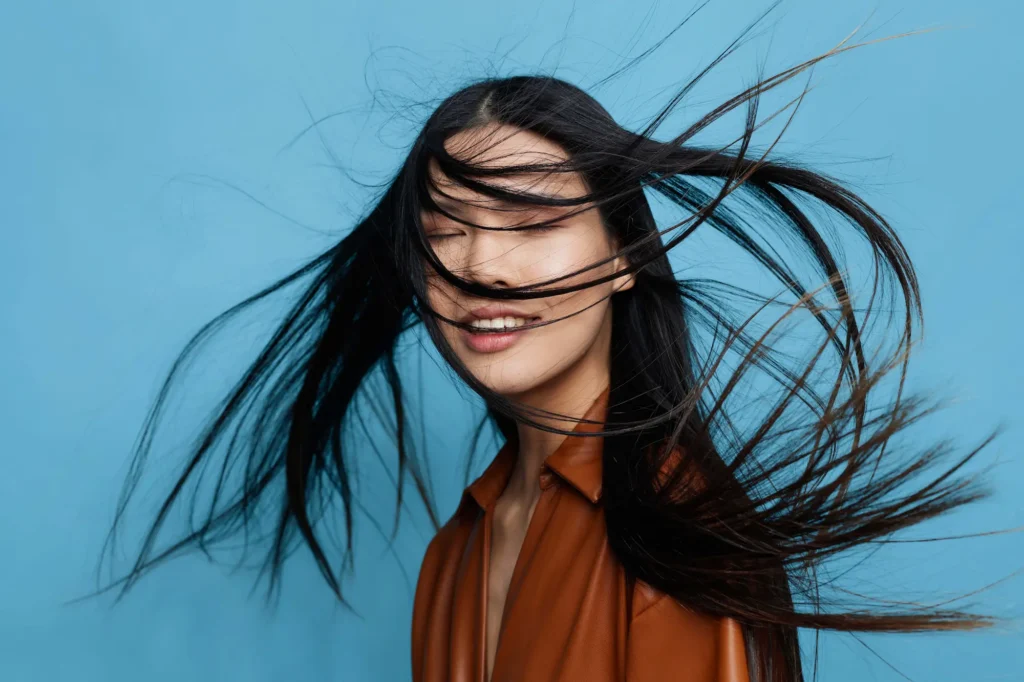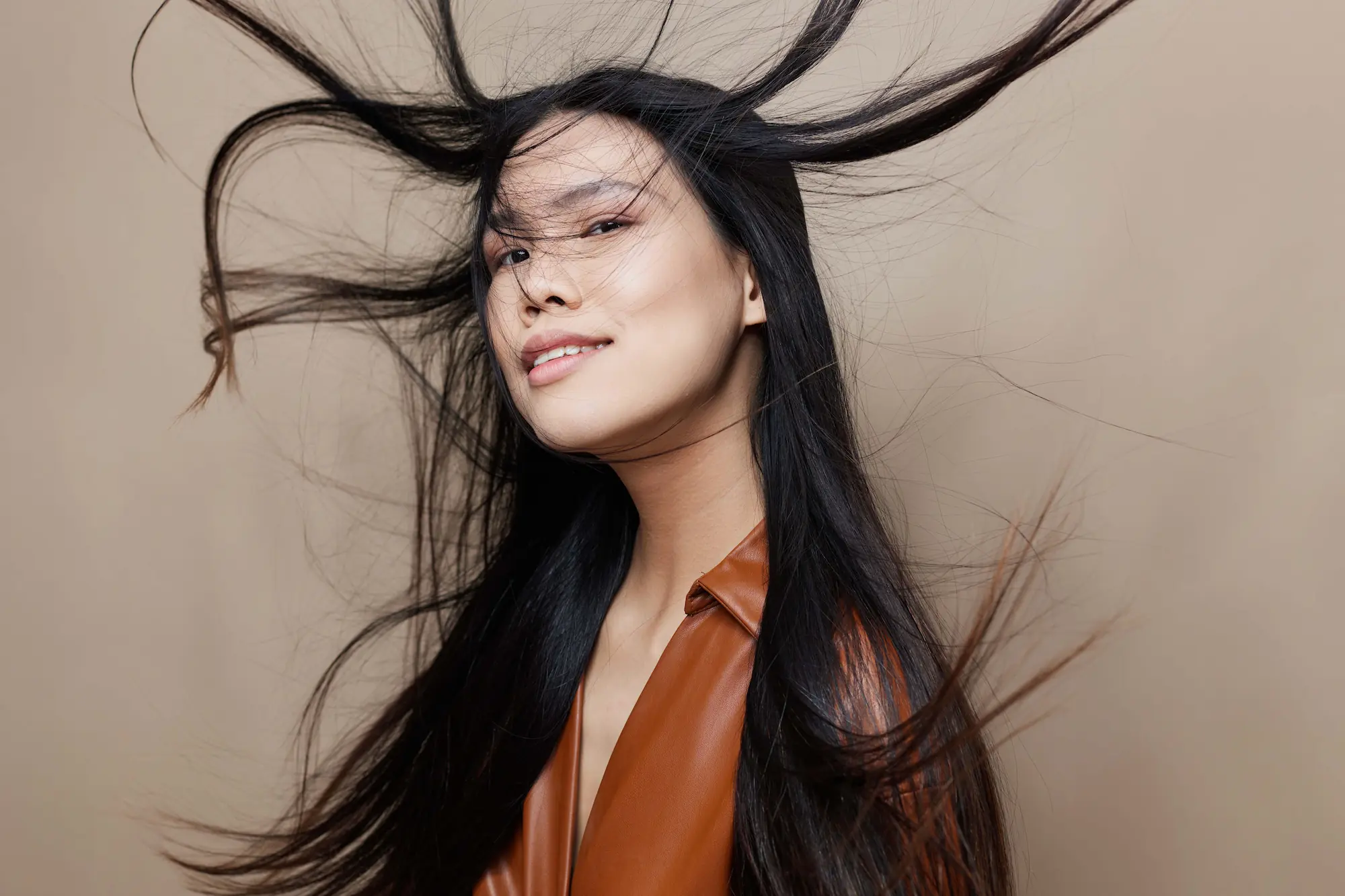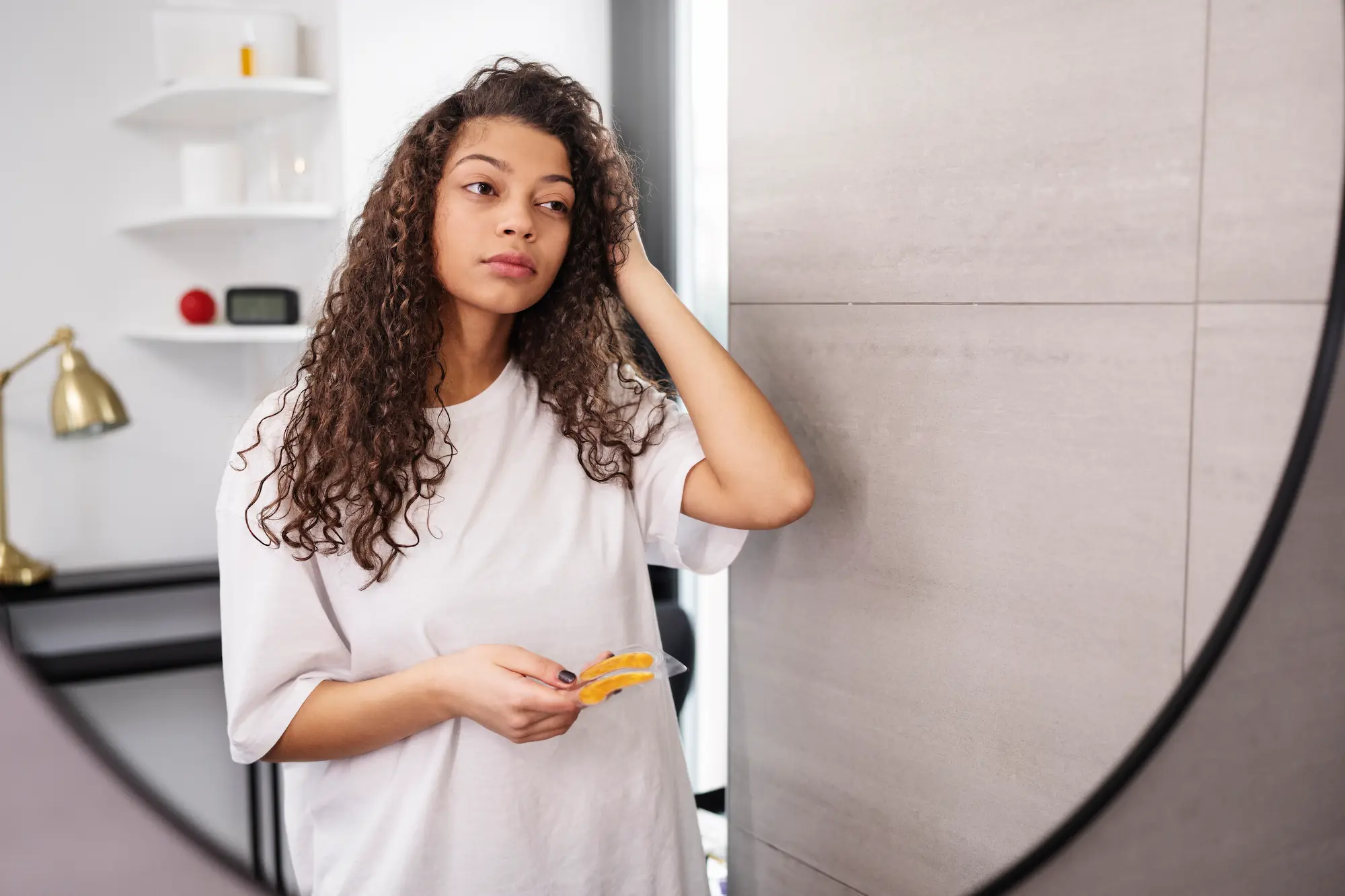We’ve all been there: You’re having a great hair day, but those pesky flyaway hairs turn your look from sleek to frizzy in no time. Flyaway hair can be annoying, particularly if you have fine hair prone to static and breakage.
If you’re looking to rid of flyaways and gain smoother and more manageable strands, you’re in the right place.
In this comprehensive guide, we’ll explore effective techniques and tips to manage and tame those flyaway hairs, ensuring your locks remain fabulous throughout the day.

Understanding Flyaway Hair
Flyaway hair occurs when individual hair strands stray from the rest of your hair, creating a halo of frizz and untamed fibers. Typically, more common in people with fine hair, flyaways can be caused by a variety of factors such as humidity, dry hair, and product buildup. The key to taming flyaway hair lies in a well-rounded hair care regimen that addresses the root causes and implements solutions for longer-lasting smoothness.
Hair Care Essentials for Taming Flyaway Hair
1. The Right Shampoo and Conditioner
2. Hair Masks for Deep Conditioning
3. Heat Protection and Styling Tools
4. Proper Drying Techniques

Daily Maintenance for Smooth Hair
Comb Instead of Brush
Taming Flyaway Hairs
Avoiding Product Buildup
Lifestyle and Environmental Factors
Humidity Control
Healthy Diet for Hair Growth
Final Thoughts
Managing and reducing flyaway hair requires a combination of the right products, techniques, and lifestyle adjustments. By incorporating hydrating shampoos and conditioners, using hair masks, adopting proper heat styling and drying methods, and maintaining a healthy diet, you can achieve smooth, manageable hair.
Remember, consistency is key in any hair care regimen. Dedicate time and effort to take care of your hair, and soon, you’ll notice fewer pesky flyaways and more good hair days. Say goodbye to flyaway hair and hello to a sleek, polished look that lasts all day.






